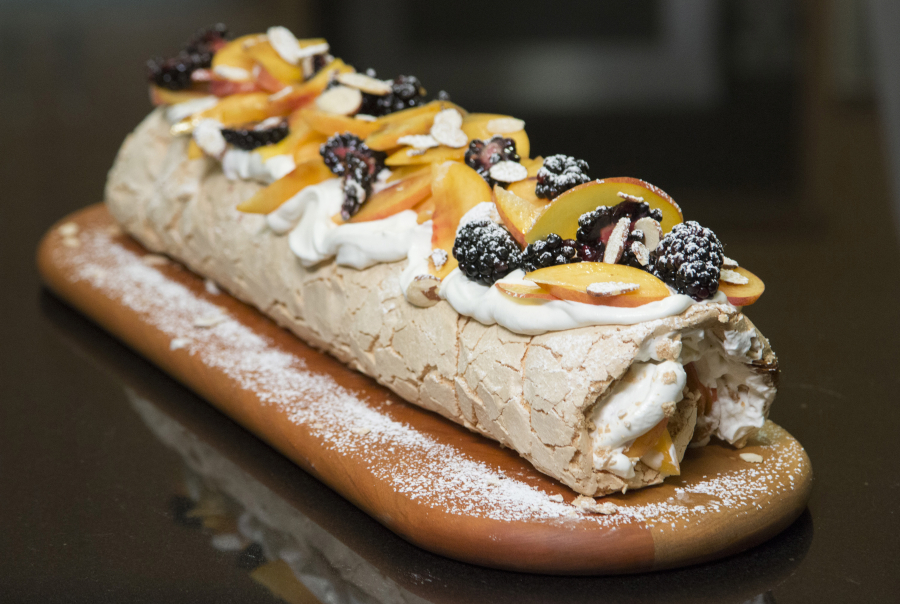2. Place the egg whites in the bowl of an electric mixer fitted with the whisk attachment and beat on medium-high speed until soft peaks form, about 1 minute. Gradually add the sugar, 1 tablespoon at a time while beating, until the mixture turns into a thick and glossy meringue, about 5 minutes. Reduce the speed to low. Combine the vanilla, vinegar and cornstarch to form a slurry, and add to the meringue. Increase the speed to medium and beat until fully combined, about 1 minute.
3. Spoon the meringue into the lined pan and use a spatula to spread it out evenly. Place in the oven and immediately reduce the temperature to 400 degrees; the contrast in temperature helps create the crisp outside along with the gooey marshmallow-like inside. Bake until the meringue is pale beige in color and crusty on top, about 35 minutes. Remove from the oven and set aside in the pan until completely cool. The meringue will have puffed up in the oven but will deflate slightly when cooled. The meringue base (unfilled) can be prepared up to a day ahead. Leave it in the pan and drape with a kitchen towel until needed. You are then ready to fill it with the fruit and cream up to 4 hours before (but ideally as close as possible to) serving.
• FILLING AND ASSEMBLY
1 2/3 cups (400 ml) heavy cream
1 teaspoon vanilla extract
3 tablespoons powdered sugar, sifted, plus extra to dust
Prepared meringue base
5 large, ripe peaches, unpeeled, pitted and cut into 1/4-inchwide segments
10 1/2 ounces (300 grams) fresh blackberries
1/2 cup (50 grams) toasted, sliced almonds
1. Make the filling: Using an electric mixer with the whisk attachment, beat the cream on medium-high speed until very soft peaks form, about 1 minute. Add the vanilla extract and powdered sugar and whisk to incorporate.
2. Place a kitchen towel flat on top of the meringue (or use the one that is already there, if you’ve made this the day before) and quickly but carefully invert it onto the work surface so that the crisp top of the meringue is now facing down and sitting on top of the kitchen towel. Lift the pan off and carefully peel away the parchment paper. Spread 2/3 of the whipped cream evenly over the meringue. Cover generously with most of the sliced peaches, blackberries and almonds (save the rest for decorating the finished pavlova log).



